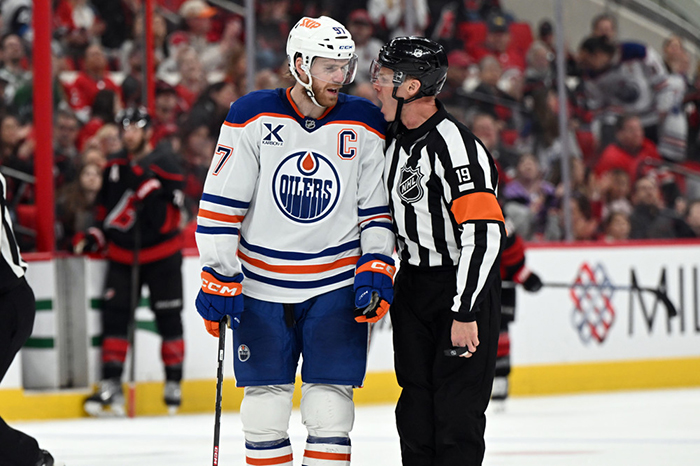Luke Hughes, like many of the restricted free agents (RFAs), is at a contract dispute that is lingering into the summer and might head to arbitration. Ideally, the New Jersey Devils take care of this beforehand and lock up their talented young defenseman.
Barring some crazy shakeup, they’ll do just that. The Devils will probably sign Hughes to a bridge deal or a deal that’s three years and makes him an RFA again at 24 years old. Then, they will give him a long-term deal.
That’s the plan, and it shouldn’t be. The Devils should give Hughes a long-term deal now, and the eight years they extend him with will pay off in the long run.
Hughes is the new building block of the defense
The Devils revamped their defense last season, notably acquiring Brenden Dillon and Johnathan Kovacevic to provide stability on the defensive end. Dougie Hamilton, who battled injuries, was the anchor from the point, and Hughes was the second option for offense on the unit.
One way or another, Hamilton is on his way out. The Devils have him on the trade block, and his expiring contract indicates the team is ready to move on from him and his injury-plagued tenure. It means Hughes is next in line to operate things from the blue line.
Hughes is still raw and learning the position. In 71 games last season, he scored seven goals and 37 assists, a sign that he’s making progress as a two-way player but not there yet. In the long run, he will be that player for the Devils.
Devils must take advantage of his prime years
There’s a good argument to be made that a bridge deal is the best way to take advantage of his prime. Hughes, at 24, can sign an eight-year deal, and the Devils will have him under contract until he’s 32. Noah Dobson’s saga shows the risks the Devils run by doing this, as they can potentially lose Hughes if his price goes up (and it inevitably will). Dobson signed a bridge deal in the 2022 offseason, and the Islanders were hoping to re-sign him but his asking price was too high and they were forced to trade him.
The Devils giving Hughes an eight-year deal now locks him up for his prime years. When he hits free agency, he’ll be 29 and playing his best hockey. It’s a bet to sign him to a big contract but one that can pay off in a few years and look like a steal, especially with a rising salary cap. 29 is when most players, notably the elite players, hit free agency but for the Devils, this is when they’ll want to give him another long-term deal if he’s good enough, as they can get the most out of his remaining prime years (as Chris Tanev is proving, 35 is the new 25).
The Devils can afford Hughes now
The Devils, for the first time in a while, have plenty of cap space to work with. They have over $6 million even with the Connor Brown and Evgenii Dadonov signings. The rest of the money can be spent on Hughes.
Even with a potential Quinn Hughes deal on the horizon, the Devils can make it work. They can pay Luke now and when the cap goes up in a few seasons, have room to spare also to sign Quinn if he indeed leaves the Vancouver Canucks.
What the Hughes contract might look like
The recent deals provide a small indication of where the Devils might look. The Kaapo Kakko deal for the RFA came a few days ago, and it was a 3×3 deal. Luke Hughes is better and more valuable than Kakko, so expect a much higher average annual value (AAV).
If Hughes signs a bridge deal, the Devils can convince him to take a pay cut. After all, he’s taking less now, knowing he can cash in later (it’s often the bargaining chip these teams use, which pays off in the short term). If he takes a long-term deal, then the recent defensemen are comparables.
Luke Hughes won’t get Dobson money or even K’Andre Miller or Ivan Provorov money. However, he can get an eight-year deal with a $6 million AAV. It will bring the Devils to the cap but considering his upside, it could end up looking like a steal of a deal.




